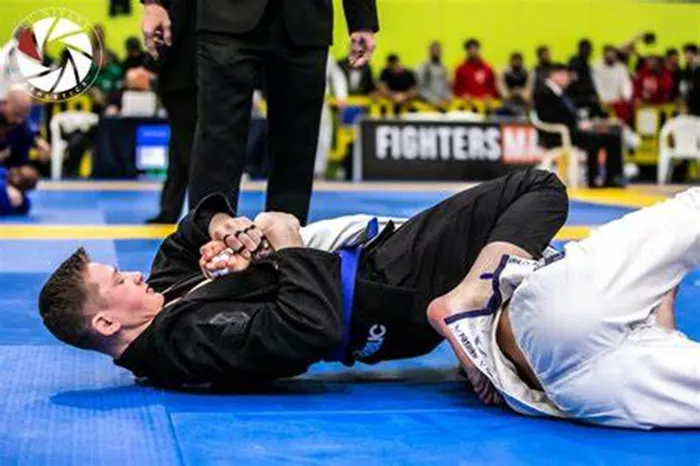Brazilian Jiu-Jitsu (BJJ) is a demanding martial art that requires not only technical skill and strength but also exceptional cardiovascular endurance. Improved cardio can significantly enhance a practitioner’s ability to maintain high levels of performance throughout training sessions and competitions. This article explores comprehensive strategies to improve BJJ cardio, ensuring that practitioners can roll longer, recover faster, and sustain their energy levels throughout intense bouts.
Understanding BJJ Cardio Demands
To improve cardio for BJJ, it is essential to first understand the specific demands of the sport. BJJ involves high-intensity bursts of activity interspersed with periods of lower intensity, requiring both aerobic and anaerobic endurance. The ability to transition seamlessly between these energy systems is crucial for maintaining performance and outlasting opponents.
Key Components of BJJ Cardio
Aerobic Endurance: This is the ability to perform moderate-intensity exercise for extended periods. It supports overall cardiovascular health and helps in maintaining steady energy levels during longer training sessions.
Anaerobic Endurance: This involves short bursts of high-intensity activity, such as explosive movements and transitions. Developing anaerobic endurance is critical for performing techniques with power and speed.
Recovery: Efficient recovery between rounds or training sessions allows practitioners to maintain performance over time. This includes both short-term recovery during sparring rounds and long-term recovery between training sessions.
Strategies to Improve BJJ Cardio
1. Incorporate Interval Training
Interval training, which alternates between high-intensity bursts and low-intensity recovery periods, is highly effective for improving both aerobic and anaerobic endurance. Here are some interval training methods tailored for BJJ:
High-Intensity Interval Training (HIIT): Perform exercises like sprints, burpees, or battle ropes for 20-30 seconds at maximum effort, followed by 10-20 seconds of rest. Repeat for 10-15 minutes.
Tabata Protocol: Engage in 20 seconds of ultra-intense exercise followed by 10 seconds of rest, repeated for 4 minutes. Exercises can include kettlebell swings, jump squats, or sprawls.
Circuit Training: Set up a circuit of various exercises (e.g., push-ups, pull-ups, kettlebell swings) and perform each for a specific time (30-60 seconds) with minimal rest between exercises.
2. Integrate Sport-Specific Drills
Incorporating BJJ-specific drills into your cardio training can bridge the gap between general fitness and sport-specific endurance. These drills mimic the movements and intensity of actual sparring, providing a more targeted approach to cardio training:
Positional Sparring: Focus on specific positions (e.g., guard passing, mount escapes) and perform high-intensity drills with a partner, rotating roles to ensure continuous movement and resistance.
Shark Tank Drills: One practitioner remains in the middle while fresh partners rotate in every 1-2 minutes, maintaining constant pressure and ensuring the middle person works continuously.
Flow Rolling: Engage in a more relaxed, continuous rolling session where the emphasis is on fluid movement and transitions rather than explosive strength, promoting aerobic endurance and technical fluidity.
3. Build a Strong Aerobic Base
A solid aerobic base is crucial for sustaining long-term training and competition performance. To build aerobic endurance:
Long, Steady-State Cardio: Engage in low to moderate-intensity cardio activities such as running, cycling, or swimming for 30-60 minutes, 2-3 times per week. This helps improve cardiovascular efficiency and overall stamina.
Low-Intensity Steady-State (LISS) Cardio: Similar to steady-state cardio but performed at a lower intensity, LISS helps in active recovery and maintaining a high volume of training without overtraining.
4. Optimize Strength and Conditioning
Strength and conditioning play a vital role in enhancing overall athletic performance and improving cardio for BJJ. A well-rounded program should include:
Resistance Training: Incorporate compound movements like deadlifts, squats, and bench presses to build overall strength. Stronger muscles are more efficient and can better handle the demands of BJJ.
Functional Training: Use functional exercises such as kettlebell swings, Turkish get-ups, and medicine ball slams to improve core stability, explosiveness, and movement efficiency.
Plyometrics: Perform explosive movements like box jumps, burpees, and clap push-ups to enhance anaerobic power and agility.
5. Focus on Breathing Techniques
Proper breathing techniques can significantly impact cardiovascular performance and endurance in BJJ. By learning to control your breathing, you can manage your energy levels and maintain composure during intense exchanges:
Diaphragmatic Breathing: Practice deep belly breathing to improve oxygen intake and reduce stress. Inhale deeply through the nose, expanding the diaphragm, and exhale slowly through the mouth.
Breath Control Drills: Integrate breathing exercises into your warm-up and cool-down routines, such as box breathing (inhale for 4 counts, hold for 4 counts, exhale for 4 counts, hold for 4 counts).
6. Maintain Proper Nutrition and Hydration
Fueling your body with the right nutrients and staying hydrated are critical components of improving cardio for BJJ. Proper nutrition supports energy levels, recovery, and overall performance:
Balanced Diet: Consume a diet rich in lean proteins, complex carbohydrates, healthy fats, and a variety of fruits and vegetables. This provides the necessary fuel for training and recovery.
Pre-Workout Nutrition: Eat a light meal or snack 1-2 hours before training that includes both carbohydrates and proteins to provide sustained energy.
Post-Workout Nutrition: Consume a combination of protein and carbohydrates within 30-60 minutes after training to replenish glycogen stores and promote muscle repair.
Hydration: Stay well-hydrated throughout the day, particularly before, during, and after training. Dehydration can significantly impact performance and recovery.
7. Prioritize Rest and Recovery
Rest and recovery are often overlooked aspects of improving cardio, yet they are essential for allowing your body to adapt and improve. Ensure you:
Get Adequate Sleep: Aim for 7-9 hours of quality sleep each night to support recovery and overall health.
Active Recovery: Include light activities such as walking, yoga, or stretching on rest days to promote blood flow and aid in muscle recovery.
Listen to Your Body: Pay attention to signs of overtraining, such as persistent fatigue, decreased performance, and increased susceptibility to injuries. Adjust your training intensity and volume accordingly.
8. Monitor and Track Progress
Regularly monitoring and tracking your cardio progress can help you identify areas for improvement and adjust your training plan as needed. Use the following methods:
Heart Rate Monitoring: Track your heart rate during training sessions to ensure you are working within the appropriate intensity zones. Wearable fitness trackers can provide real-time data and insights.
Training Journal: Keep a journal of your workouts, noting the duration, intensity, and type of exercises performed. This can help you identify patterns and make informed adjustments to your training program.
Performance Testing: Periodically test your cardio fitness through standardized tests such as the beep test, Cooper test, or time trials to measure improvements in endurance and aerobic capacity.
9. Mental Toughness and Visualization
Building mental toughness is a key component of improving cardio for BJJ. Developing a strong mindset can help you push through fatigue and maintain focus during intense training sessions and competitions:
Visualization: Practice visualizing successful performances and overcoming challenging situations. This mental rehearsal can enhance your confidence and readiness.
Positive Self-Talk: Use affirmations and positive self-talk to boost your motivation and resilience. Replace negative thoughts with constructive, empowering statements.
10. Incorporate Cross-Training Activities
Cross-training can complement your BJJ training by providing a diverse range of physical challenges that enhance overall cardiovascular fitness:
Swimming: Swimming is a low-impact, full-body workout that improves cardiovascular endurance and muscle strength.
Cycling: Cycling offers a great cardio workout that can build leg strength and endurance without the impact of running.
Rowing: Rowing engages multiple muscle groups and provides an excellent cardio and strength workout, enhancing both aerobic and anaerobic capacity.
Conclusion
Improving cardio for BJJ requires a multifaceted approach that encompasses interval training, sport-specific drills, strength and conditioning, proper nutrition, rest, and mental toughness. By incorporating these strategies into your training regimen, you can enhance your endurance, maintain peak performance, and outlast your opponents on the mat. Remember, the journey to superior cardio is a continuous process of adaptation and improvement. Stay consistent, monitor your progress, and embrace the challenge as you work towards becoming a more resilient and powerful BJJ practitioner.
[inline_related_posts title=”You Might Be Interested In” title_align=”left” style=”list” number=”6″ align=”none” ids=”9011,9008,8928″ by=”categories” orderby=”rand” order=”DESC” hide_thumb=”no” thumb_right=”no” views=”no” date=”yes” grid_columns=”2″ post_type=”” tax=””]































